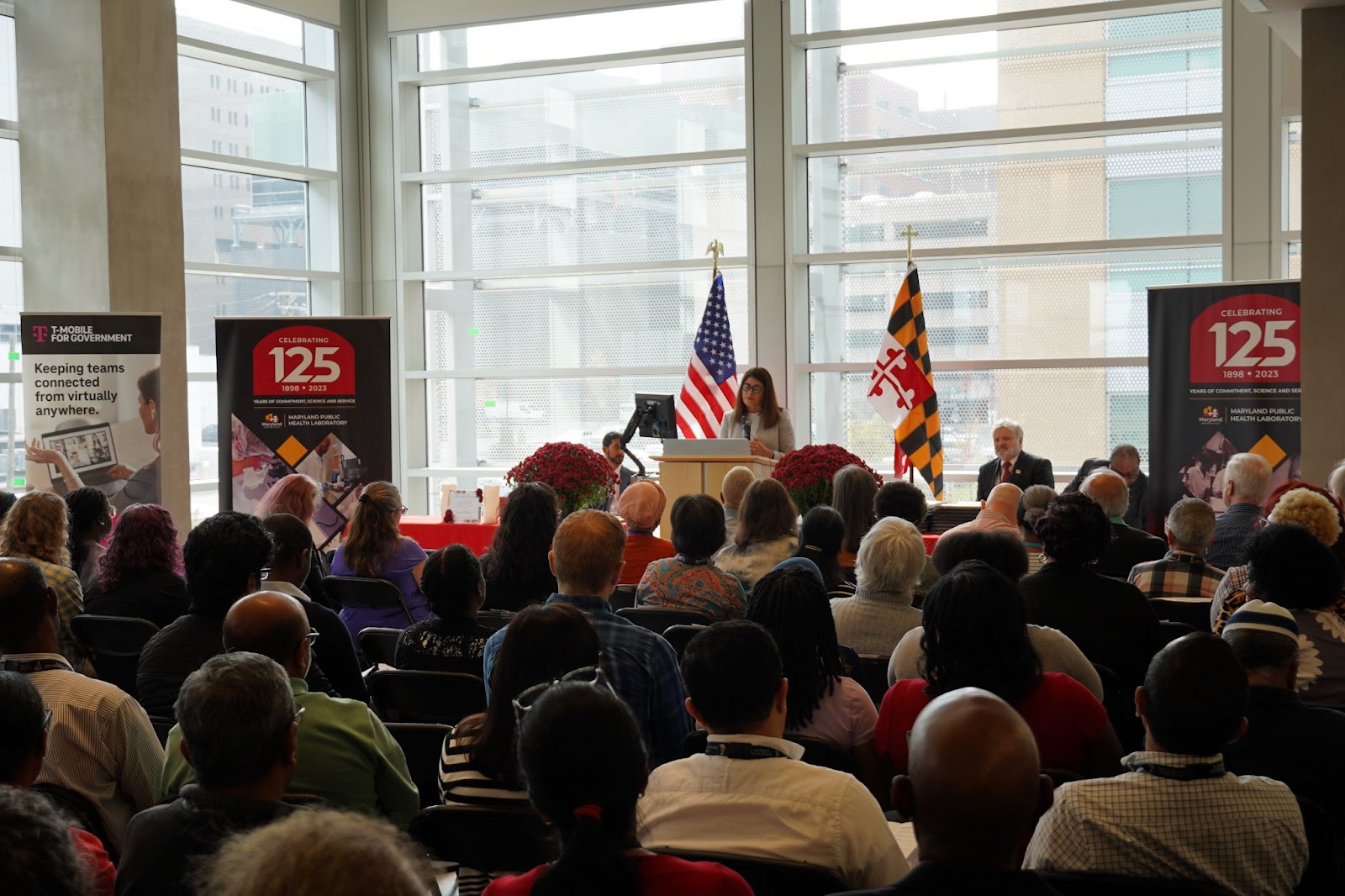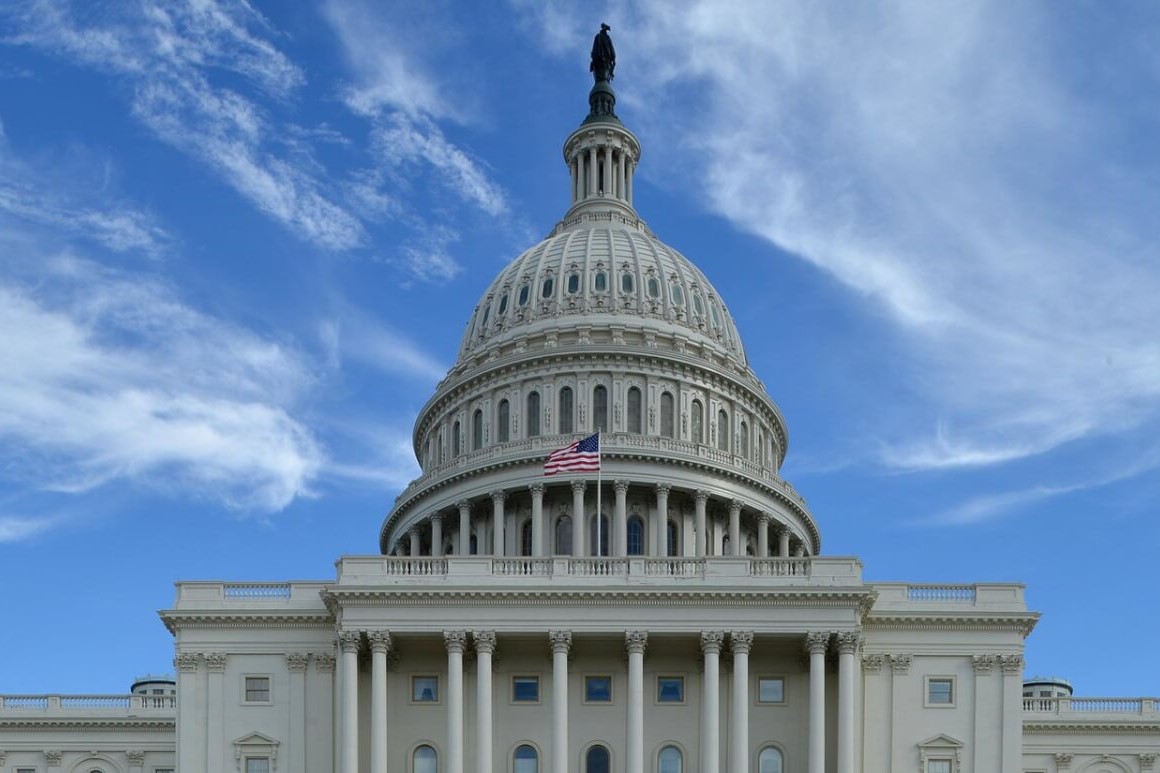State laboratory celebrates 125 years of disease surveillance, environmental testing

Health officials held a 125th anniversary celebration Monday for the Maryland Public Health Laboratory, the oldest continuously functioning unit of the state health department, recognizing the long history of disease surveillance and environmental testing that helped inform public health policy.
“For decades, the men and women who dedicated their careers to the Maryland Public Health Laboratories have made it their mission to protect Marylanders from disease, research new and emerging health threats, and preserve our lands and waterways from environmental dangers,” Health Secretary Dr. Laura Herrera Scott said at the facility located in Baltimore.
For historical context, the concept of small organisms that infect the body and lead to disease, also called the “germ theory of disease” started gaining widespread acceptance in the medical community in the 1860’s onward, according to an online exhibit called “Contagion: Historical Views of Diseases and Epidemics” hosted by Harvard University.
Research and experiments from the likes of Louis Pasteur and Robert Koch, among others, helped push the concept of germ theory into medical acceptance and practice.
Just a few decades later, the Maryland Public Health Laboratory would be formed to help combat some of the diseases identified to have been caused by germs.
“Our roots can be traced back to our founding in 1898, when, at the recommendation of the Maryland Board of Health, the legislature appropriated $2,500 to hire a state biologist or bacteriologist, Dr. William Royal Stokes, to provide testing, free of charge to physicians, to establish a more rigorous scientific basis for communicable diseases such as typhoid fever, diphtheria, malaria, cerebral spinal meningitis, and tuberculosis,” said Robert Myers, the director for Maryland Public Health Laboratory.
“Also to examine drinking water and food for bacterial contamination to provide public health officials to implement more efficient sanitation methods,” Myers added.
In the 125 years later, the Maryland Public Health Laboratory now has an operating budget of $52.3 million and conducted about 9.3 million tests in 2023 for a variety of needs, such as “newborn screening, environmental chemistry, environmental microbiology, public health microbiology, ….. immunology, and molecular biology,” Myers said.
He noted that while some of the diseases that were around at the founding of the laboratory have largely been dealt with, others remain a public health issue and new diseases emerge in the modern day.
“Typhoid fever by improved sanitation, diphtheria by vaccination, and measures to control mosquito populations to prevent the surge of malaria,” Myers said. “Some of these historic threats that weren’t controlled, such as rabies and tuberculosis, have persisted. And others have periodically reemerged. For instance, reemerging measles outbreaks in unimmunized populations.”
“More importantly, throughout our history, we have been continuously challenged to quickly and effectively respond to new and emerging threats to public health, such as HIV/AIDS, bioterrorism, novel pandemic influenza viruses, SARS-CoV-2 (COVID-19), the growing problem with antimicrobial resistance and newly recognized chemical contaminations in the environment,” he continued.
Dr. Nilesh Kalyanaraman, Public Health Services deputy secretary, highlighted the efforts of the laboratory staff whose work may get overlooked in the process of applying public health measures and policies.
“When we look at the work that were doing – diagnostic testing, reference testing, surveillance monitoring, emergency response support, applied research, workforce development and training for lab personnel – it really does touch all of the public health issues across the state,” he said.
He also pointed to the laboratory’s work in identifying a recent case of locally acquired malaria. In order to confirm the diagnosis of malaria, blood samples had to be tested at the laboratory.
“I know that many of you were involved in figuring out what was the sequencing there,” Kalyanaraman said to the attendees, many of whom have worked at the facility for decades.
Herrera Scott praised the laboratory for its role in researching antibiotic resistance and highlighted infant screenings that protect the “health of Maryland’s future generations.”
“The history of Maryland’s public labs unfolds every time you don your lab coats, every time you fire up a test in your testing equipment, and certainly as you log into your computers,” Herrera Scott said.
“You are providing your diagnostic services that we as citizens of Maryland often take for granted,” she said.
Herrera Scott announced, on behalf of Governor Wes Moore (D) and Lt. Governor Aruna Miller (D), she would declare Oct. 30, 2023 as Maryland Public Health day, and presented a proclamation to Dr. Myers.




 Creative Commons Attribution
Creative Commons Attribution